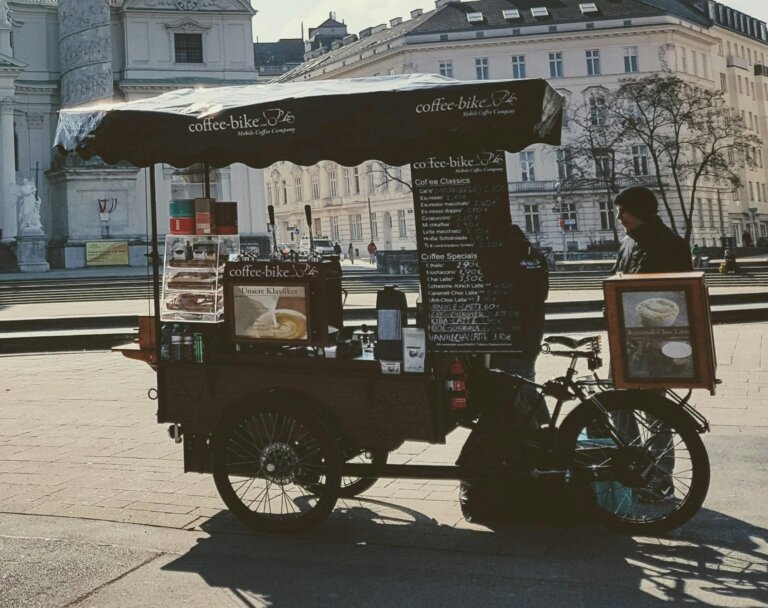Perfect extraction timing for an espresso is a small detail that can make a big difference in the quality, flavor, and aroma of your coffee. Perfect extraction time is the key to a perfect espresso. This is because it allows the oil and solid of coffee to be fully expressed. If the extraction is too quick it will result in a sour taste and if it is too slow it can lead to bitterness. So how long should an espresso shot take?
Quick Answer
The ideal duration of an espresso extraction should be 25 to 30 seconds. This time frame is widely accepted by baristas and professionals as it allows the optimal extraction of coffee flavor.
Why Does Espresso Extraction Time Matter?
Extraction time is the most important factor in the overall profile of your coffee. It is important for crema, flavor, and shot quality.
If the extraction is too slow the shot becomes over-extracted and results in a bitter and ashy taste. This is because more of the desirable contents are pulled from the coffee ground. This overshadows the satisfying taste which makes espresso enjoyable.
Similarly, if the extraction is quick the shot becomes under-extracted. This results in a sour, and watery taste. This is because the water finds gaps in the coffee ground and easily goes through it without pulling the sugar and oil content which contribute to a full-bodied flavor.
How Long Should An Espresso Shot Take?
The sweet spot for an espresso extraction is between 25 to 30 seconds. This time frame allows perfect extraction from the coffee flavor and is a favorite among many baristas and coffee professionals.
What happens during the time frame?
During the espresso extraction, hot water is forced through finely ground coffee under high pressure which pulls the essential components from the ground. Here is a complete breakdown of what happens in the complete time frame.
First 10 seconds: The acidic compound that gives espresso its bright and sharp tone is extracted in this time frame.
10 to 20 seconds: Sweeter compounds are pulled in this time frame giving depth and balance to the flavor of espresso.
20 to 30 seconds: In this stage, the water pulls out the bitter compounds from the coffee ground. If the extraction continues past 30 seconds an excess of bitter compound is being extracted from the ground leading to a harsh tasting shot.
A closer look at espresso timing.
25 to 27 seconds is the gold standard for espresso. The espresso should have a thick, golden crema on top and will display a well-rounded flavor profile with a balance of acidity, sweetness, and a hint of bitterness.
27 to 30 seconds is a perfect time frame for those who want a bolder and more intense flavor. This is because more of the bitter compounds a extracted from the coffee ground.
However, it is important to note that the ideal time frame of 25 to 30 seconds is just a guideline. Various factors can influence your ideal extraction time, including the type of coffee you are using, the grind size, the dose, and the type of machine.
Your taste preference also plays a huge role. Some people might prefer longer extraction for a stronger and more intense flavor, while others prefer shorter extraction for a balanced and less intense flavor.
Factor Influencing Espresso Shot Time
Extracting the perfect shot of espresso isn’t only about following the time. Each element from grind size to machine setting plays an important role in how long should an espresso shot take, and how it will taste. Let’s break down these key factors that influence espresso shot time and how to adjust them for the best result.
Grind Size
Grind size is the most important factor that influences the espresso shot. It determines how long your espresso shot will take. Water moves slowly in a fine grind because the tiny particles block all the spaces and create more resistance for water to move through it. This increases the extraction time allowing the water to pull more of the coffee ground compound. whereas in a coarse grind, water flows through it quickly resulting in less extraction time and a weaker espresso.
Tip: Start from medium grind and adjust from there. If the extraction is too fast, make the grind finer but if it is slow, make it coarser.
Coffee Dose
It is the amount of coffee ground you put in the portafilter. This directly affects the extraction timing. A lower dose decreases resistance which leads to faster extraction. Whereas a higher dose increases resistance leading to a slower extraction time.
Measure your dose accurately each time. This will ensure consistency in your shots and make it easier to troubleshoot any timing issue.
Tamping Pressure
Tamping pressure is the pressure applied to the coffee grounds in the portafilter before brewing. It influences how water flows through the ground. A firmer tamp creates more resistance while a lighter firm creates less resistance allowing the water to flow more freely.
Tip: Apply the same amount of pressure each time to maintain consistent shot time.
Water Temperature
If the water is too hot it can lead to over-extraction, resulting in a bitter and unpleasant taste. If the water is too cold it can lead to under-extraction and will result in a sour or weak shot. The perfect water temperature is between 90°C to 96°C or 195°F to 205°F.
Tip: You can boil the water and then let it cool down for a minute.
Machine Type
The type of espresso machine can greatly influence the extraction time. A manual espresso machine gives you full control over timing but it requires practice to get it right. Semi-automatic and automatic espresso machines are more consistent but require adjustment to grind size, dose, and pressure tamping to get the desired shot
Tip: Each machine has its quality. We have written a complete blog post on the best espresso machines.
Balance These Variable
These variables are interconnected. For example, a finer grind may require a light tamp whereas a coarse grind requires a firm tamp. With practice, you will be able to make small adjustments that will bring you to the perfect shot every time.
Common Mistake And How To Avoid Them
Mistakes can happen when brewing espresso. Here are some common pitfalls and how to correct them.
Over-Extraction
Over-extraction is when water takes too long to flow through the coffee ground. This pulls the bitter compound that lies deep in the coffee. Resulting in an espresso that has a bitter, harsh, and ashy flavor.
Signs of Over-Extraction
- It has a bitter, harsh, and ashy flavor.
- The texture is dark, and thick and has a syrup consistency.
- Dry and overly rough mouthfeel.
How to Correct Over-Extraction
If the extraction takes more than 30 seconds then try to stop it earlier. Aim for 25 to 30 seconds.
Water takes time to flow through the finer grind. Adjust the grind size to coarser for an easy flow of water.
Lowering the dose can help is quick extraction.
Under-Extraction
Under-extraction is the opposite of over-extraction. In this process, water flows through the coffee ground quickly resulting in a weak, acidic, or sour taste. This is because the water does not have enough time to pull out the full range of flavor from the espresso.
Signs of Under-Extraction
It has a sour, acidic, or weak flavor.
The texture is light, and thin and has a watery consistency.
The crema is pale and weak.
How to Correct Under-Extraction
Let the shot run a bit longer to allow more flavors to develop if the shot is taking less than 25 to 30 seconds time frame.
Use fine grind to create more resistance, resulting in a slow water flow and more extraction time.
Adding more dose to the portafilter can increase resistance and lengthen the extraction.
Conclusion
The key is to experiment and adjust your shot timing to find what works best for you. The ideal time for an espresso shot extraction is 25 to 30 seconds but that is not always the case. Various other factors such as grind size, coffee dose, tamping pressure, water temperature, and machine type also affect the shot timing.
These factors are not independent, they are interconnected. These are small adjustments that can bring a big difference in the overall quality of the espresso. Making great espresso is more practice as it is about precision. Don’t be afraid to experiment with different grind sizes, coffee doses, and timing. Each shot is an opportunity to learn something new and with every pull, you are getting closer to discovering the sweet spot for your taste.
FAQs
How Long Should You Pull An Espresso Shot?
An espresso shot should ideally be pulled within 25 to 30 seconds. If your shot is taking too long or too short, it is crucial to fine-tune the basics like grind size, coffee dose, and tamping pressure.
What Does A Perfect Espresso Look Like?
A perfect espresso shot has a rich, creamy crema on top with a golden brown color. The flavor is balanced, sweet, smooth, and full-bodied. The shot should pour evenly from both spouts and have a thick, syrupy texture.



